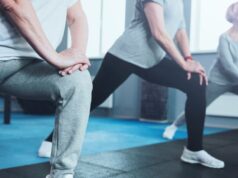
Short bursts of exercise can boost the brain by improving learning and memory, US research has found.
A team from the Oregon Health &Science University (OHSU) reports that a short burst of exercise leads to an improvement of the function of a gene responsible for increasing connections between neurons located in the hippocampus, which is the part of brain linked to learning and memory.
Before this study, it was already known that regular exercise leads to improved general brain health and also helps to reduce obesity and type 2 diabetes risk. In this new study, the researchers looked at the specific benefits of exercise to the mind.
Dr Gary Westbrook, who was the study’s co-senior author, said: “Exercise is cheap, and you don’t necessarily need a fancy gym membership or have to run 10 miles a day. Previous studies of exercise almost all focus on sustained exercise. As neuroscientists, it’s not that we don’t care about the benefits on the heart and muscles, but we wanted to know the brain-specific benefit of exercise.”
The researchers measured the response of the brain to single bouts of exercise on running wheels in sedentary mice. In total, the creatures covered a few kilometres in two hours, representing the human equivalent of 4,000 steps or a game of football or basketball.
The results revealed that this physical activity resulted in an increase in synapses in the hippocampus and led to the discovery that the gene Mtss1L was key to the process.
When the gene is activated by short bursts of exercise, it led to the brain becoming primed for learning.
Next, the researchers plan to look at the impact of short bursts of physical activity on learning tasks to further understand this relationship.
The study was supported by US organisations including the National Institute of Neurological Disorders and Stroke of the National Institutes of Health and endorsed by the National Institutes of Health and Department of Veterans Affairs as well as the Department of Defense. It was published in the journal eLIFE.








